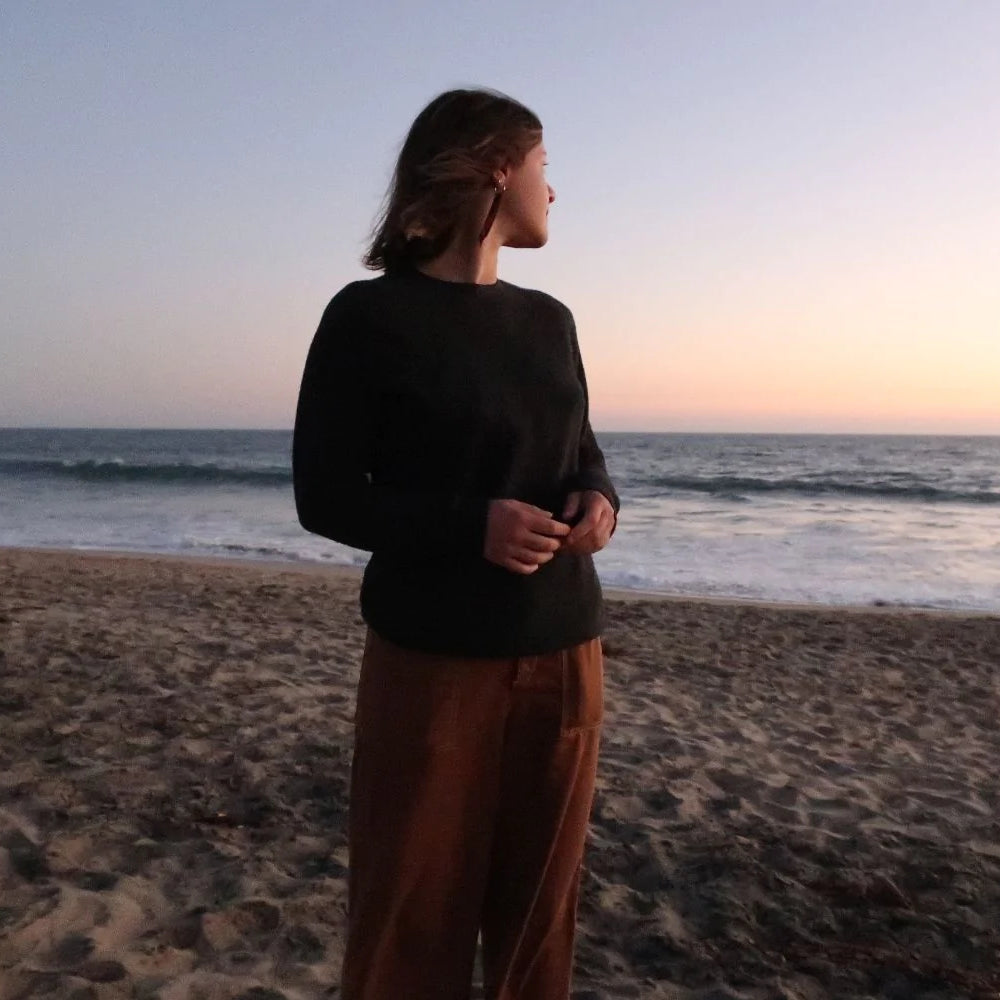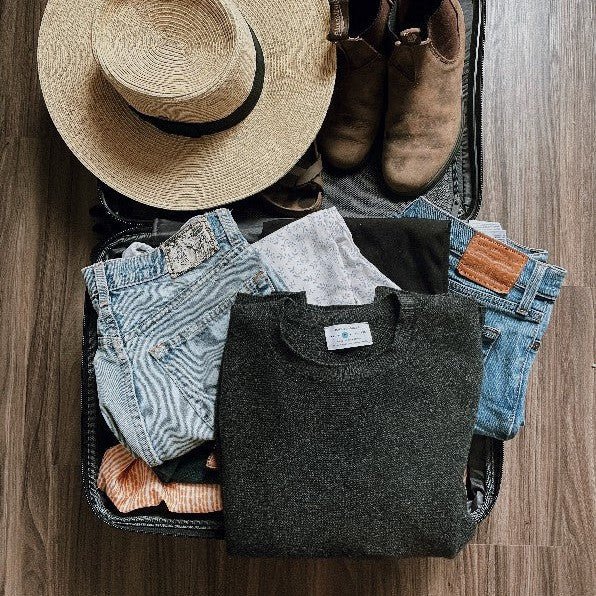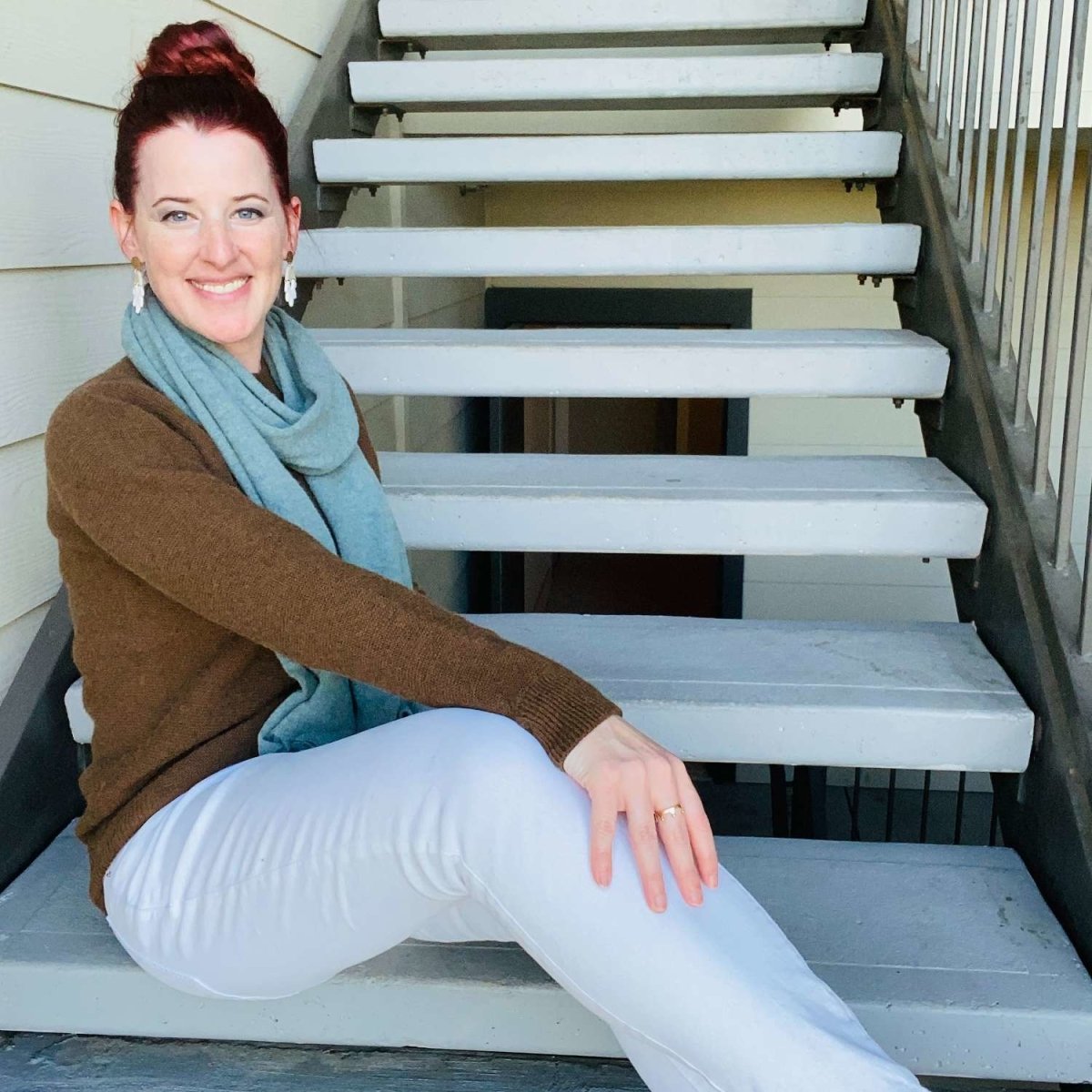SeaCell Can Help Keep Our Oceans Healthy
Why you should choose the SeaCell sweater.
June 8, 2023
By Lia Klinchik
Could your clothing be influencing ocean health? Waste from fast fashion is a big contributor to the world’s ocean pollution. Swapping that nylon sweater for SeaCell is a step in the right direction for sustainability.
I grew up in the Northeast and have explored many different coastal environments. From Cape Cod to Acadia National Park to Asbury Park, the Northeast has beautiful beaches and wildlife.
Every so often, sections of the beach were closed off to protect nesting or threatened wildlife, and dunes were most always fenced in to safeguard against wandering feet.
I couldn’t help but notice the water bottles, cans, and assortment of plastic parts that made their way into those so-called safe places, as well as scattered across the beach. Despite perpetual ‘Carry in, Carry out’ signage, people never seemed to listen.
While there’s trash on the beach we can point out with the naked eye, there’s also a lot we can’t see. For example, plastic doesn’t vanish into thin air as it breaks down. Instead, it degrades into tiny microplastics that get lost at sea.
Microplastics end up in the ocean from many sources, one of which is our clothing. And they put marine life in danger, pass through water filtration systems, and are extremely difficult to clean up.
There is a way we can help reduce the abundance of microplastics; switch to a minimalist wardrobe and choose sustainable materials wisely.
By making an adjustment to our closets, we can help shrink the 91% of microplastic particles that the textile industry contributes to total microplastic pollution.

How Fast Fashion Affects Ocean Health
Fast fashion is big on producing clothing cheaply and making a lot of it. These clothes end up in popular stores like Urban Outfitters and Forever21. If you look at the tag on the inside of your shirt, you might notice a list of materials, some of which will read: __% nylon, acrylic, or polyester. By using these synthetic materials, companies are able to produce large quantities of clothing for a low cost with a high markup in stores.
Synthetic materials contribute to pollution by consuming oil and depend on fossil fuel extraction. An article on Circular Economy and Sustainability of the Clothing and Textile Industry in 2021 showed that the fashion industry not only anticipated to use up to 25% of the world’s carbon budget but also contributes to the 92 million tons of textile waste per year globally.
Microfibers are big contributors to microplastic pollution. Every time a garment made from synthetic fibers is washed, it releases up to 2,000 microplastic fibers, eventually ending up virtually anywhere on the planet.
The tiniest microplastics are small enough to be mistaken for food by zooplankton, allowing them to enter the food chain at very low trophic levels. Zooplankton are then eaten by a larger predator.
Plastics are then carried throughout the food chain and eventually into our bellies.

Changing Ocean Health With A SeaCell Sweater
Seaweed is a nutrient-dense algae towering over sea life and providing food to marine inhabitants. But it can also be used for clothing.
To break it down, SeaCell is a man-made fiber sourced from cellulose, a plant fiber. Lyocell (the type of fabric Oliver Charles uses to make the seaweed sweater) is made from a combination of SeaCell (sourced from seaweed) and woodcell (sourced from wood pulp).
Lyocell is a regenerated fiber and uses significantly fewer chemicals than another big “sustainable” cellulose-based material, viscose. Along with this, it’s easier to recycle and results in no byproducts.
I was pretty skeptical about the whole “no byproducts” bit, so I did some research.
I read a really cool article that goes over the trends of cellulose-based textiles. It stated, “Lyocell is the first successful technology of cellulosic fibers by direct dissolution.” It also confirmed some of the desirable qualities of Lyocell, such as durability and thermoregulation.
The Oliver Charles summer sweater is created from a combination of both lyocell and organic cotton, a natural fiber.
I can’t stress enough how important it is that cotton is organic due to the high amount of pesticides and insecticides traditionally sprayed on the plant. These toxins leech back into the environment, finding their way into waterways.

Sustainable Materials That Support The Planet
It’s rare that companies put your mind at ease in relation to environmental sustainability. CEOs are hard to reach, and the truth can be difficult to find. Many companies are sneaky about their sourcing and production.
I stand by the notion that simplicity is important in regard to many things. If it’s not simple and takes too much energy when you have work to do and places to go, then sometimes it’s not worth it.
But there are easy ways to be part of protecting ocean health and the rest of the planet, especially with clothing.

3 Steps To A Sustainable Capsule Wardrobe
Taking these 3 steps start you on an eco-conscious path, preventing the greater contribution of pollution in our world’s oceans.
- Stay far away from fast fashion companies. Choose companies that are transparent about who they are, what they do, and what they create. You shouldn’t have to search for answers.
- Opt for the core 4 materials: natural textiles such as yak wool, linen, and silk; if choosing a man-made fiber, choose SeaCell!
- Create a capsule wardrobe. Find the outfits you love, upgrade them with high-quality, sustainable clothing in terms of production and material, and wear those outfits all the time!
Aside from helping me put together a sustainable capsule wardrobe, my Oliver Charles sweater supports a microplastic-free future. I'll keep my sweater forever, especially with their lifetime guarantee.
At the end of the day, there is no hiding when aligning yourself with the planet.
Choosing SeaCell over viscose was a conscious choice. With SeaCell, I was able to bypass the popularity and greenwashed marketing of viscose.
If you believe that every good wardrobe starts with owning less and owning better, consider buying yourself an OLIVER CHARLES sweater.
Shop NowSummer Sweater Challenge: The Ultimate Travel Companion
Fitting into my wardrobe, luggage, and life without me having to think twice about it.
Read moreMinimalist Closet Challenge: 10 Items, 5 Outfits, 7 Days
Embrace simplicity with this challenge; 17 positive takeaways, 5 things I'd do differently.
Read moreColor Palette Challenge: Exploring New Colors In Your Wardrobe
Invest in high-quality clothing items, and build a versatile wardrobe that can be mixed and matched in multiple ways.
Read more



